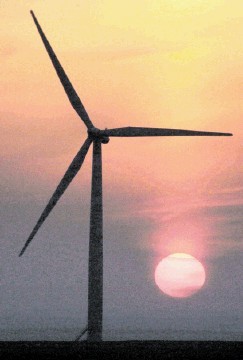
Offshore wind technology could be feasible in several locations off Guernsey’s coast in the English Channel, according to a preliminary feasibility study.
However the cost of establishing a usable set-up of around 30MW is higher than current French importation and on-island generation.
To mitigate this higher cost it has been recommended that the majority of the project is funded by the State of Guernsey to secure the lowest cost.
The preferred site is far offshore towards the 12 nautical mile boundary. This location is in relatively deep water and most suited to the new floating wind turbine structures.
The lowest cost site is likely to be in the shallow waters off the north coast or any coastal site.
But the study said this near shore location may have visual and other human impact.
The research was carried out by engineering consultancy Xodus Group and funded jointly by the States of Guernsey and Guernsey Electricity.
The States of Guernsey Renewable Energy Team have been progressing the recommendations following receipt of the report.
This work includes the placing of remote sensing equipment at Chouet headland alongside the existing wind monitor.
The Renewable Energy team will seek to continue to progress its work in this area, before discussing the viability of such a project with the Committee for the Environment & Infrastructure in due course.
Deputy Shane Langlois, member of the Committee for the Environment & Infrastructure, said: “‘A 30MW offshore wind farm has the potential to generate around one third of Guernsey’s current electricity requirements.
“While the cost of electricity generated by wind turbines would, at the moment, be more expensive than importing or on-island generation, it is clear that the gap between the two is narrowing and will likely continue to do so as the technology further evolves.
“Indeed recent tenders in northern Europe have been at very competitive prices. The Committee welcomes the findings of this study and, while not without risk, believes there are significant opportunities in progressing this work, such as security of supply, energy independence, fixed prices and lower emissions.”
Recommended for you
